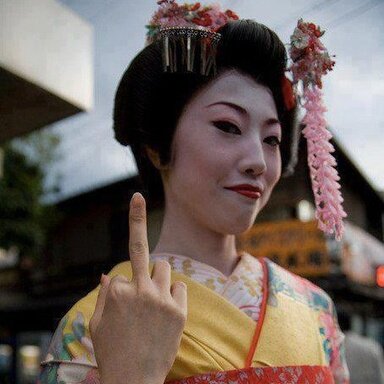- Welcome to Cook'd and Bomb'd.
-
 Perfect sub 1 minute songs...
by Minami Minegishi
Perfect sub 1 minute songs...
by Minami Minegishi
[Today at 01:35:27 PM] -
 A dream
by Elderly Sumo Prophecy
A dream
by Elderly Sumo Prophecy
[Today at 01:35:17 PM] -
 If you had to shag an animal...
by Underturd
If you had to shag an animal...
by Underturd
[Today at 01:34:26 PM] -
Trans Mania: Graham Linehan... by Noakes
[Today at 01:31:48 PM] -
 News at Ten incident with...
by dontpaintyourteeth
News at Ten incident with...
by dontpaintyourteeth
[Today at 01:31:41 PM] -
 Snooker 23/24
by druss
Snooker 23/24
by druss
[Today at 01:25:30 PM] -
 Kingdom of the Planet of the...
by beanheadmcginty
Kingdom of the Planet of the...
by beanheadmcginty
[Today at 01:24:44 PM] -
 "B*lt my hat's arse!"...
by Endicott
"B*lt my hat's arse!"...
by Endicott
[Today at 01:19:23 PM] -
 You couldn't say anything...
by Terry Torpid
You couldn't say anything...
by Terry Torpid
[Today at 01:18:59 PM] -
 Israel-Gaza Conflict III -...
by Buelligan
Israel-Gaza Conflict III -...
by Buelligan
[Today at 01:12:09 PM]
Members
 Total Members: 17,826
Total Members: 17,826 Latest: skinnylike
Latest: skinnylike
Stats
 Total Posts: 5,585,513
Total Posts: 5,585,513 Total Topics: 106,770
Total Topics: 106,770 Online Today: 1,083
Online Today: 1,083 Online Ever: 3,311
Online Ever: 3,311- (July 08, 2021, 03:14:41 AM)
Users Online
 Users: 89
Users: 89 Guests: 837
Guests: 837 Total: 926
Total: 926 Elderly Sumo Prophecy
Elderly Sumo Prophecy Underturd
Underturd Cuellar
Cuellar druss
druss Minami Minegishi
Minami Minegishi Cleveland Steamer
Cleveland Steamer WeebleWobble
WeebleWobble Hans Resist
Hans Resist gmoney
gmoney daf
daf Mr Farenheit
Mr Farenheit sardines
sardines Poobum
Poobum trabuch
trabuch Small Potatoes
Small Potatoes Jockice
Jockice KaraokeDragon
KaraokeDragon Magnum Valentino
Magnum Valentino Petey Pate
Petey Pate Pranet
Pranet FredNurke
FredNurke The Crumb
The Crumb Norton Canes
Norton Canes Dr Rock
Dr Rock George White
George White robotam
robotam sevendaughters
sevendaughters persephone
persephone BlodwynPig
BlodwynPig Buelligan
Buelligan Jerzy Bondov
Jerzy Bondov Fabian Thomsett
Fabian Thomsett fancywookiee
fancywookiee SpiderChrist
SpiderChrist famethrowa
famethrowa Black Emerald
Black Emerald Wonderful Butternut
Wonderful Butternut Better Midlands
Better Midlands Urinal Cake
Urinal Cake DelurkedToHelp
DelurkedToHelp Drop Dead Fred
Drop Dead Fred Imperator Helvetica
Imperator Helvetica pandadeath
pandadeath BritishHobo
BritishHobo Bunty Levert
Bunty Levert Lordofthefiles
Lordofthefiles bambiraptor
bambiraptor TommyTurnips
TommyTurnips billyandthecloneasaurus
billyandthecloneasaurus Chapwithwings
Chapwithwings chutnut
chutnut Pink Gregory
Pink Gregory Tiggles
Tiggles shoulders
shoulders Exposition
Exposition Gulftastic
Gulftastic beanheadmcginty
beanheadmcginty Dr M1nx PhD
Dr M1nx PhD Ted_Dibiase
Ted_Dibiase Buffalo Many Times
Buffalo Many Times White Dog Poo
White Dog Poo PlanktonSideburns
PlanktonSideburns Steve Lampkins
Steve Lampkins Rebekka1978
Rebekka1978Toyah! Toyah! Toyah!
Started by dontpaintyourteeth, March 23, 2024, 03:53:37 PM
Previous topic - Next topic
User actions

